Mar 07, 2018
Washington Program Trains Dental Super-Generalists to Serve Rural Communities
Learn more about the RIDE program in RHIhub's Rural Health Models and Innovations.
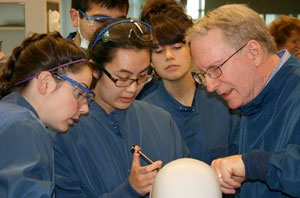
Focusing on community needs and students' desires to practice in rural and underserved areas, the University of Washington School of Dentistry (UWSOD) created the RIDE program, or Regional Initiatives in Dental Education. The program, designed to provide students with the knowledge, tools, and experience to make a rural practice comfortable, is now placing over 70% of its graduates in rural/underserved areas of Washington, as well as California, Oregon, and Texas.
The 4-year program is modeled after UW Medicine's WWAMI program, and strives for integration with it. For first-year biomedical science instruction, WWAMI medical and RIDE dental students both attend school at Spokane's Eastern Washington University (EWU) "hub" campus, sharing classes when possible. RIDE students' second- and third-year training occurs with their peers in Seattle. Overall, 40% of RIDE's curriculum is delivered in the less populous eastern part of Washington. In their fourth year, RIDE students spend four months working with community health center dentists. This training is intended to create a "super-generalist" able to meet oral health needs in rural and underserved areas.
The program, conceived in 2003 with original start-up funding in 2007, was UWSOD's response to its university's mission to serve all of Washington's residents, not just those state residents in urban areas, but also those outside of metro areas. Dr. Art DiMarco, RIDE program director on site at Eastern Washington University, said the RIDE curriculum designers understood that student loan forgiveness hadn't proved a dependable draw for rural placement.
"Loan repayment programs provide wonderful incentives, but they don't attract as many students as are needed, so we looked to UW Medicine's WWAMI program," DiMarco said. "Prior to WWAMI, few students chose rural and underserved locations in the Northwest. WWAMI has had a significant impact on numbers of medical graduates who practice in such communities. With our new RIDE program, we were aiming for some of the same outcomes. But to have over 70% locating in rural and underserved areas, that's an incredible result."
But placement statistics indicate only part of the program's success. Feedback from these communities also helps tell RIDE's story. Dr. Robert Dillard, a RIDE preceptor in Okanogan, Washington, said feedback comes to his practice in two ways.
"My patients pat me on the back all the time saying how happy they are that I'm part of the program," Dillard said. "They like being part of the educational system."
The second success marker, according to Dillard, is the appointment log.
Patients are already calling at least once a day to get scheduled with the RIDE student who's expected in a few months.
"Patients are already calling at least once a day to get scheduled with the RIDE student who's expected in a few months," Dillard said.
Or perhaps program success is even better articulated by a current RIDE student, Hayley Denison, in her fourth year.
"A lot of the patients I see have already seen previous RIDE students," Denison said. "The patients actually seem to look forward to our care. They have confidence in our decision-making. Even if I see a patient who's not had a previous RIDE student, they seem to know about us and don't question seeing me. It's awesome that we seem to be very accepted by the communities."
RIDE Success: Identifying Curriculum Needs
Attracting students who want to help rural communities and communities with similar needs. Seventy percent placement rate. Evidence of community and patient satisfaction. What is the backstory for this successful dental education model?
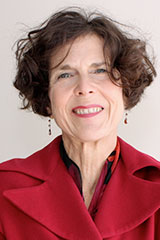
Anyone who talks about RIDE says its existence must be credited to Dr. Wendy Mouradian. Eventually practicing in rural Washington after a WWAMI pediatric residency experience, Mouradian is a physician raised in New York City and trained in New York and Boston. As RIDE's founding director, she said her rural experience gave her an up-close look at oral healthcare needs in rural and underserved areas.
"I understand the appeal of small towns and rural areas," Mouradian said. "Early on I realized I wanted to take on a leadership role to do something meaningful for these communities."
Transitioning from her rural practice to a craniofacial leadership position at Seattle Children's Hospital, Mouradian next found herself working in the public policy arena to help bring more dental care to areas in need. She served as an advisor to the Health Services and Resources Administration (HRSA) doing work on primary care/oral health integration and worked at the National Institute of Dental and Craniofacial Research.
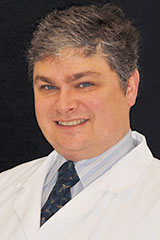
But Mouradian is quick to share a comprehensive list of funders, institutions, organizations, and individuals that made the RIDE program a reality, from Washington's state legislature, to university administration, to key dental faculty and community preceptors. She highlights the strategic leadership of DiMarco on the Spokane campus, and Dr. Frank Roberts, current RIDE director who has multiple UW appointments, including associate professor and predoctoral program director in Periodontics, Chief of Periodontics at the Seattle VA Hospital, and interests in both the basic sciences and in public health.
"The periodontist understands oral and systemic connections and uses the same language as a physician," Mouradian said. "Frank had a clear understanding of how dental and medical students would benefit from the same education and how to integrate with dental hygiene students as well."
Roberts said it was important for the RIDE curriculum to coordinate with the UW medical curriculum because cavities are not the only problems that dentists treat. Mouth cancers, gum conditions, and jaw bone problems – all part of routine dentistry – are impacted or even driven by complex medical conditions. Understanding these medical diseases then becomes important for dental students too.
Rural or urban, the patients we're seeing in regular dental clinics are now older — often even 95 years old — they have multiple medical problems, they're in electric wheelchairs, have had three different types of transplants, they have cancer, they are living with chronic medical conditions.
"Our dental school education needs this medical focus especially in the first two years," Roberts said. "Rural or urban, the patients we're seeing in regular dental clinics are now older — often even 95 years old — they have multiple medical problems, they're in electric wheelchairs, have had three different types of transplants, they have cancer, they are living with chronic medical conditions. The students really must have a solid basic biomedical science foundation for their dental training. This was the first thing we had to solve with RIDE because that training occurs in their first year of school, as it does for the medical students. Once we had pulled that together on the Spokane campus, we created a great program and I'm happiest about having accomplished that."
Though having no other experience for comparison, fourth-year student Denison said she can't imagine having a classroom experience without med students.
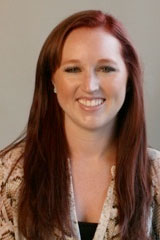
"The interaction with the med students is fantastic — it's awesome," Denison said. "It's so cool to know that the first year of dental school and the first year of medical school are pretty identical. Commonly, people believe dentists don't know much medicine, or even need to know as much medicine as medical doctors. But out in practice, we're pretty much on an equal playing field. Even today, I do medical consults for my patients, I talk with my patients' primary doctors and even their medical specialists. Having that experience with medical students really solidifies confidence for those conversations because we have a common language. We are able to form relationships readily with those doctors because we studied with med students."
Creating the Spokane Campus
Coordinating medical and dental curriculums happened on EWU's Spokane campus. In addition to WWAMI, the RIDE program critically intersects with the EWU dental hygiene program, whose faculty assist in dental student training. During the program's formation, DiMarco, an EWU professor and both a RIDE administrative and clinical presence, experienced many challenges moving the program forward. The two most daunting? Infrastructure build and faculty recruitment.
"In an environment not used to educating dentists, there was limited space for RIDE on a campus that was already very, very full," DiMarco said. "We needed compressed air and gas lines, and a simulation lab. I met with an architect every two weeks for a year and a half and finally got the right design and permission to build the space we have now."
DiMarco said it was also not a simple matter to identify all the faculty needed to teach the dental students.
A comparison is that dental schools graduate a professional who will perform oral surgery in a time frame of four years, compared to the medical path of a surgeon, which might be twice as long. So, we go like the wind. That means we have to have a lot of courses.
"Dental curriculum is more intense than the medical curriculum in many ways," DiMarco said. "A comparison is that dental schools graduate a professional who will perform oral surgery in a time frame of four years, compared to the medical path of a surgeon, which might be twice as long. So, we go like the wind. That means we have to have a lot of courses. From the traditional research fields like microbiology and immunology, it can be difficult to recruit experts who are interested in teaching the type of curriculum we wanted for our RIDE students. Fortunately, I did have contacts who were interested. And some dental faculty actually moved from UW-Seattle to help us. It all worked out and we have incredible faculty."
RIDE Curriculum: Keys To Preparing the Rural Workforce
Mouradian said another early step in curriculum design was to think in terms of training the dental equivalent of the family medicine physician, the key provider for delivering medical care to rural and other populations needing dental services.
"We decided that the equivalent of a family practitioner in dentistry would be a 'super-generalist,'" Mouradian said. "So we created the curriculum needed to train a competent general dentist able to handle the extra difficulties that would be encountered in a rural practice."
RIDE Curriculum Keys
- Have faith in the students' desire to provide care to rural populations and reward this interest early.
- Ensure comprehensive training for rural practice.
- Provide mentoring and post-graduation support.
- Structure education for a "cohort effect."
Acknowledging the important work of initial student selection done by the admissions committee, Mouradian and Roberts explain they believe they've identified four keys to their placement record in training dentists to deliver high-quality care to rural and other populations with oral health needs. First, have faith in the students who express desire to provide care in rural areas and hardwire a training experience in those communities early in the curriculum. For example, RIDE students complete a rural practice experience their first summer. This is not just a shadowing experience, as students show up with their first-year regional anesthesia and other basic dental skills, which allows them to help dentists at those practice sites. Second, because confidence plays an important role in students' final choice of practice site, ensure they receive training in the advanced skill sets needed to meet the challenges of rural practice. Third, try to prevent or diminish the sense of isolation that rural practitioners may experience by connecting them to faculty mentors and community preceptors during their student rotations and continuing these relationships after graduation.
Roberts explains that a fourth and unexpected key emerged: the "cohort effect."
We thought about what we needed to do for their academic and clinical training, not so much what they were going to learn from each other. It's actually quite humbling to see how much they get from each other.
"The first-year RIDE curriculum is probably more demanding than the regular curriculum," Roberts said. "The students are there every day. Nobody skips class. They support each other with study groups, encouraging preparedness, preclinical work. There's support to do well, and there's support when they are having trouble, with studies or with life. They take care of each other. When we created the curriculum, we didn't think about that. We thought about what we needed to do for their academic and clinical training, not so much what they were going to learn from each other. It's actually quite humbling to see how much they get from each other."
From RIDE Graduates Come RIDE Preceptors
Dr. Camille Wahl, now practicing in Colville, Washington, was one of RIDE's first graduates. Her first practice site was in Coeur d'Alene, Idaho, where she thought she'd be able to practice a broader set of dentistry skills. In short order, she returned to the rural practice setting "about an hour and a half over the mountains from where I grew up." Wahl recalls her Colville interview three years ago. Though she'd not done her RIDE rotations in Colville, she knew it was a RIDE site. She asked if she'd be able to precept students.
"I got a 'yes' response to that question, and right off the bat, I knew this is where I wanted to be," Wahl said, sharing that teaching was an activity she was always involved with during her undergraduate and graduate years.
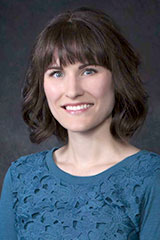
"I come from a family of educators and I think it's in my blood to teach," Wahl said. "When I get those RIDE students so eager to learn, asking for feedback on those tiny little things that make such a big difference in dentistry, it's really rewarding. Especially seeing them grow and be ready for practice. We hope they'll come back to us."
As a preceptor, Wahl wants to replicate the RIDE training she received that made such a difference, especially in those first post-graduate months.
"When I first graduated, I'd talk to some of my classmates. They were staying late. Their patients were waiting. Me? I'd been pushed as a student. I had a jump on time management," Wahl said.
In addition to teaching, Wahl says she gains career satisfaction from direct patient care of rural and other patients in need, especially when using "gentle dentistry" techniques to help overcome dental phobia.
"I'd been taught that people show fear through anger, so my first year here was difficult, dealing with people who were so angry, but who were actually just very, very afraid of the dentist," Wahl said. "People would yell, get mad. Now three years later I hear, 'I've heard about you' and 'I wanted to schedule with you.' They come back for that second, third, or even fourth appointment some of them need. Word is getting around about all the doctors here. Families are not so afraid to come see us. We really make a difference in oral health here."
Another Curriculum Key: Passionate Preceptors
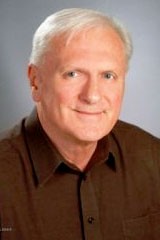
Mouradian and Roberts also point out the tremendous impact of their preceptors' passion for providing oral healthcare to rural populations. Back in Okanogan, Dillard, also a UWSOD graduate, shares his path to becoming a RIDE preceptor. He said he looks back on his career that included military service, chief of dentistry positions, working in several large Veterans Health Administration facilities across the country, and always teaching oral health students along with providing direct patient care, a career track he describes as "perhaps a bit cosmopolitan." But, he says he recognizes that significant career fulfillment has come from these later years when he started working in the public health arena. He said it was a profound experience to connect with community health professionals so committed to patients. Eventually finding himself back in Washington in a rural area, "I called my school to see if there was something I could help with. Here I am, a RIDE preceptor."
Are they acting as if this is just another mouth they are looking in? Or are they approaching dental needs in perspective, looking at the whole person? To do that over and over again all day long is hard.
"My focus is to make sure the dental needs of patients [with oral health needs] are met," Dillard said. "That's where I come from, that's my driving force since I came to community health. I've seen students in many capacities over the years, so I know to look at how they connect with patients. Are they acting as if this is just another mouth they are looking in? Or are they approaching dental needs in perspective, looking at the whole person? To do that over and over again all day long is hard. These RIDE students separate themselves out by how they interact with patients. Each patient is unique to them. Each patient's concern is important. These students have a genuine, one-on-one concern for patients and are very professional. These are the experiences that make me come back to work every day to teach."

